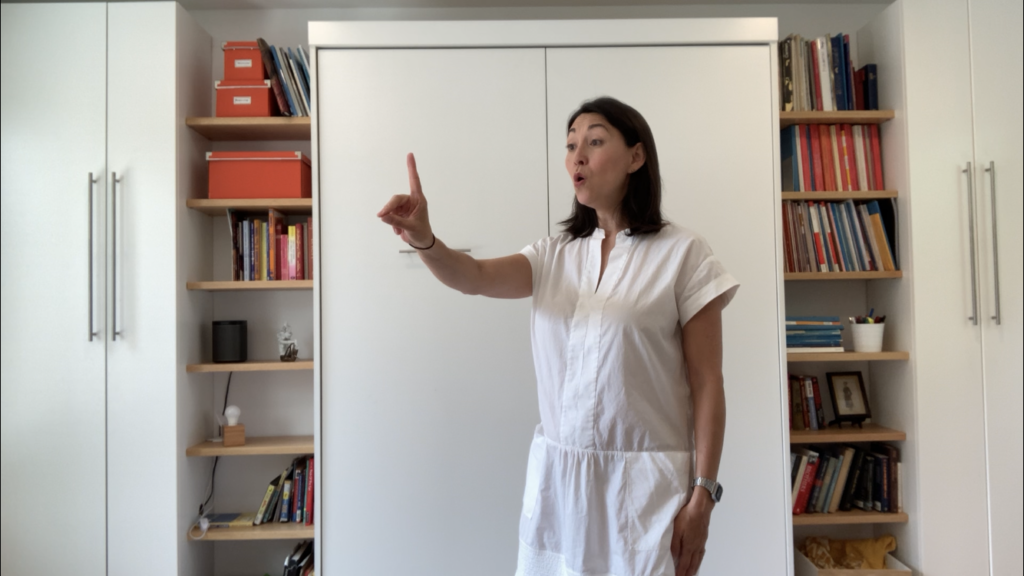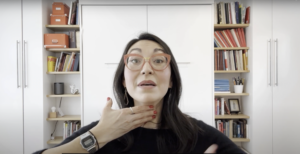Got wobbly last notes? No longer! Let’s get the breath flowing steadily so you can power your singing evenly through the phrase.
Why do the last notes of phrases sound so wobbly, flat, and sad? It comes down to airflow. Once we’ve reached the final note of a phrase, we tend to mentally check out and stop sending active air, so that last note languishes and poops out.
But everyone can still hear you.
And to make things worse, that crummy, unloved last note is not even setting you up for a good inhalation, because you can’t release your breath in when nothing is happening.
Let’s fix it! This exercise also helps build active legato and forward momentum, so benefits all around.
How to do The Candle Exercise
The candle is just a concept, not a specific series of notes. I’ll give you some pitches to try it out, but it’s great to apply this right into repertoire.
1. Hold your index finger up at arm’s length, and imagine it’s a candle.
2. Blow out one tank of air in such a way that your imaginary flame flickers the whole time. Don’t blow it all the way out! Just steadily blow til you’re empty.
3. Release the throat, belly, and back, and let the air back in.
4. Try adding some phonation (voice) to this steady breath. On the next exhalation, add some “oo” to the candle blow. Rather than thinking of “switching to oo,” think about “adding oo to the blowing breath.”
I know this is an odd idea, but maintaining the idea of blowing and adding voice to it will help you to prevent a condensed tone. We want to keep the tone filled with breath and flowing. Want to know if you’re doing it right? The “oo” should last about as long as the blow.
Now you’ve got the basic idea of keeping the breath flowing all the way to the end by imagining the candle flickering. You can take that idea right into repertoire and apply it wherever you feel stuck, especially on final notes. If you want to work on it more in practice, here’s a great vocalise:
1. Continuing with the feeling of the candle breath, sing the syllable “Noo” down an arpeggiated octave and back up the scale. So, “Do-Sol-Mi-Do-Re-Mi-Fa-Sol-La-Ti-Do.”
2. Blow the candle actively on the way down the arpeggio, and especially on that bottom note and the final note (yes, that’s pretty much all the notes).
I hope you’ll enjoy these exercises and that it will help you iron out some wobbles and feed your singing all the way through each phrase. Let me know how it works for you!
Thanks for practicing.



One Response